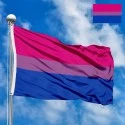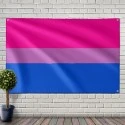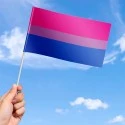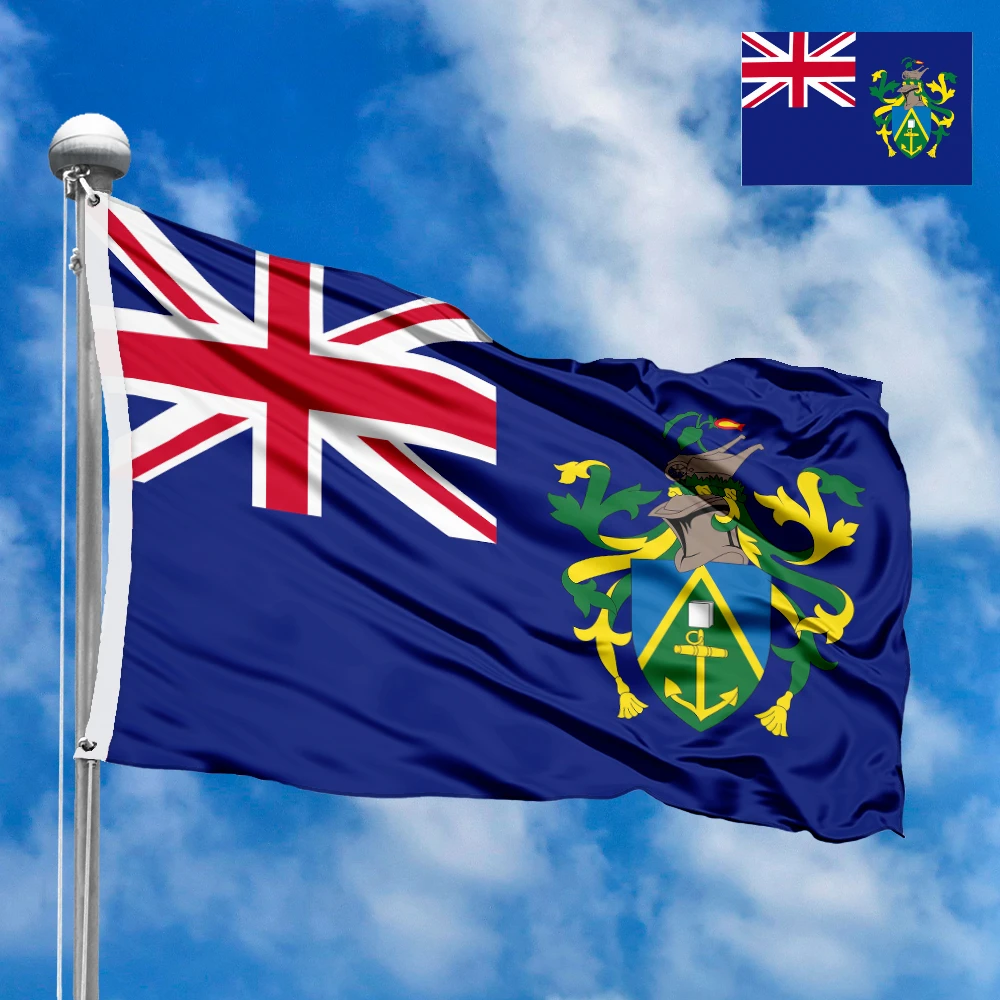- All Flags
- Flags of Countries by Continent
-
Flags of Organizations
- Flags of UN countries
- Flags of the European Union countries
- Flags of NATO countries
- Flags of the countries of the Organization of Islamic Cooperation
- Flags of the countries of the Organization of American States
- Flags of the Arab League countries
- Flags of the African Union countries
- Flags of the countries of the Union of South American Nations
- Flags of the Commonwealth of Nations
- Flags of the countries of the Secretariat of the Pacific Community
- Flags of the Nordic Council countries
- Flags of the Caribbean Community
- Flags of the countries of the Association of Southeast Asian Nations
- Flags of the East African Community
- Flags of the countries of the Organization of Turkic States
- LGBT Community Flags
- Historical Flags
- Ethnic Flags
- Flags of the USA (states)
Description
The Bisexual Pride flag is an important and recognizable symbol created to provide visibility and recognition for bisexual identity within the broader LGBTQ+ community and society as a whole. It serves as a powerful expression of pride, uniqueness, and solidarity for people who are attracted to more than one gender. The flag is intended to combat the misconceptions and stigma often directed at bisexual people and to create a space for their self-identification.
Design and Symbolism
The flag consists of three horizontal stripes of different widths and colors:
-
Wide pink stripe (at the top): This color symbolizes attraction to the same sex.
-
Wide blue stripe (at the bottom): This color symbolizes attraction to the opposite sex.
-
Narrow purple stripe (in the middle): The purple color, which results from the mixture of pink and blue, symbolizes bisexuality. It represents attraction to both sexes and the unique position that bisexuality occupies, as if "crossing over" between homo- and heterosexuality.
History of the Flag's Creation
The Bisexual Pride flag was created in 1998 by activist and designer Michael Page. At the time, bisexual people often felt invisible or misunderstood, both within the LGBT community and outside of it. Page wanted to create a unique and recognizable symbol that would allow bisexual people to openly express their identity.
Michael Page drew inspiration from an earlier symbol—the so-called "biangles," which also used pink, purple, and blue colors. Page designed the flag to be recognizable even when its colors were faded or distorted. He unveiled his flag on December 5, 1998, and since then, it has become widely used around the world as the official symbol of bisexual pride.
Meaning for People
For bisexual people, the flag has deep meaning because it provides them with visual confirmation of their identity. It is a symbol of recognition and pride, helping to combat so-called "bisexual invisibility"—a problem where bisexuality is ignored or mistakenly perceived as a "phase" or a "non-existent" identity.
The flag creates a sense of community and belonging, allowing people who may feel isolated to see that they are part of a larger group with a shared identity and shared experiences. It also serves as an educational tool for non-bisexual people, helping them understand the uniqueness of bisexuality as a distinct and valid sexual orientation.
Interesting Facts
-
Michael Page intentionally did not copyright his design so that the flag could be freely used by all bisexual people and their allies.
-
Each of the three stripes of the flag has its own size. The pink stripe occupies 2/5 of the flag's height, the blue stripe 2/5, and the purple stripe 1/5.
-
The Bisexual Pride flag has inspired the creation of many other pride flags that also use three horizontal stripes to signify their identity.
In the demonstration images, full-size flags are shown with proportions of 2:3, and hand-held flags with proportions of 1:2.
Donation
Download
Completely free for commercial and non-commercial use (public domain).
You can freely use them in your news magazines, websites, software, mobile applications.
We appreciate a backlink to https://flagssite.com
Raster files - Bisexual Flag (PNG, JPG)
 Waving flag
Waving flag
- PNG format (transparent background), 72dpi, dimensions in Pixels (px), aspect ratio 3:4.
- 15х20 px
- 30х40 px
- 60х80 px
- 120x160 px
- 240x320 px
 Sizes:
Sizes:
"v15" - image size (by height); if necessary, replace with available: v15, v30, v60, v120, v240.
!!! For resizing, use the Latin (eng) keyboard layout.
<img src="https://flagssite.com/flags/v15/20852.png" alt="Bisexual Flag">
 Round flag
Round flag
- PNG format (transparent background), 72dpi, dimensions in Pixels (px), aspect ratio 1:1.
"d15" - image size (diameter); if necessary, replace with available: d15, d30, d60, d120, d240.
!!! For resizing, use the Latin (eng) keyboard layout.
<img src="https://flagssite.com/flags/d15/20852.png" alt="Bisexual Flag">
 Rectangular flag 2:3
Rectangular flag 2:3
- JPG format, 72dpi, dimensions in Pixels (px), aspect ratio 2:3.
"h30" - image size (by height); if necessary, replace with available: h15, h30, h60, h120, h240, h360, h480.
!!! For resizing, use the Latin (eng) keyboard layout.
<img src="https://flagssite.com/flags/h30/20852.jpg" alt="Bisexual Flag">







 Sizes:
Sizes:
 Sizes:
Sizes: